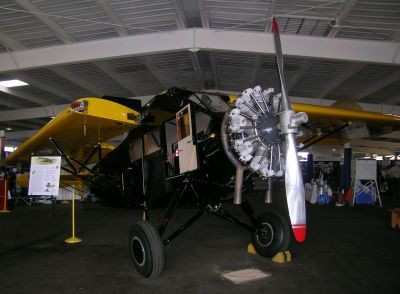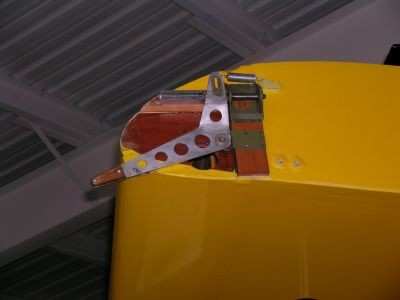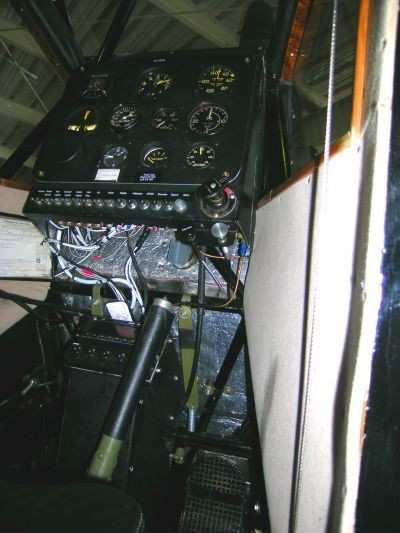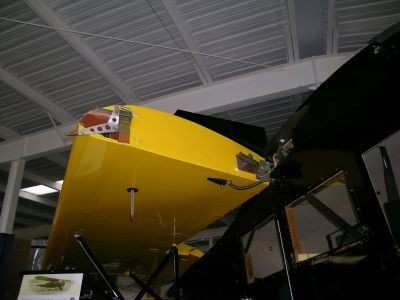NASA's Very First Aircraft
By ANN Correspondent Kevin O'Brien
 Many aviation buffs know that NASA,
the National Aeronautics and Space Administration, started as the
National Advisory Committee for Aeronautics (NACA). I bet you knew
that.
Many aviation buffs know that NASA,
the National Aeronautics and Space Administration, started as the
National Advisory Committee for Aeronautics (NACA). I bet you knew
that.
But did you know what NACA's first plane was? Or that it is
still flying today? Read on, space cadets, and you'll learn what I
just did. The really cool thing is that Greg Herrick, the man that
had the plane restored, didn't learn about it's NACA history until
his restoration was done!
To begin at the beginning, let's set the Wayback Machine for
1926. In that year, a fellow named Sherman Fairchild had a growing
aerial photography and survey business, but he didn't have a good
airplane for the job. His decision would be rational to any EAA
member: he decided to design and build his own. His plane had some
pretty rare characteristics for the day: great stability and
load-carrying capacity, a roomy cabin and excellent visability. It
went through a couple of iterations, before coming to the attention
of NACA. In the meantime its fame had spread far beyond Fairchild's
photographic and survey work. Admiral Byrd used one for Antarctic
exploration... and left it behind. When the next expedition came,
five years later, he thawed it out.

NACA had started with a few dollars slipped into the Navy budget
between the submarines and battleships somewhere, and in its first
shaky years it subsisted on airplanes bummed from the armed
services, but by 1928 they were ready for their first one, and they
wanted stability, lots of visibility, and load-carrying capacity
for conducting experiments. Requirements similar to the ones for
which Sherman Fairchild designed his plane, now called the FC-2W2,
led them to Fairchild and FC-2W2 #531, completed November 9, 1928,
wound up in NACA's possession.
NACA used the machine for aerodynamic and icing tests, among
many others.
When NACA was finished with it, in 1936, they removed its
P&W Wasp engine, and the Department of the Interior picked the
600-hour Fairchild up for the Park Service. For the first time, it
acquired a N number, 13934, which it still bears. It served in
Manteo, North Carolina, and was flown by legendary NC pilot Dave
Driskill to and among the barrier islands of the Outer Banks. After
six years and another 700 or so hours, the plane moved again to
Winslow, Arizona, to serve the Bureau of Indian Affairs on the
Navajo Reservation there.

At the end of WWII the sudden availability of thousands of
wartime liaison and transport aircraft made the prewar Fairchild
look dowdy and elderly. It was sold for #300 and passes through a
slew of private operators, being wrecked, rebuilt, metalized and
suffering all kinds of indignities.
When Greg Herrick's Yellowstone Aviation Inc. acquired N 13934
in 1996, he determined that the plane could probably have been
flown if it could have been started. He didn't try, but committed
to a complete, stripped-to-frame restoration instead. The metal
skin was removed and replaced with correct fabric; the wooden wings
were restored to like-new condition.
At the time, nothing was known about the planes NACA history,
but its significant Outer Banks period was known, so the Fairchild
is restored to its appearance in the late 1930s as flown by Dave
Driskill.

Herrick enjoys flying the vintage machine. It took part in the
National Air Tour last year, and he brought it to Oshkosh this
year, where its National Park Service livery won it a place in the
federal building.
One feature of the Fairchild FC monoplanes was a wing-folding
system roughly resembling that of the modern GlaStar. A single
steel pin links the wooden spar to the tubular carrythrough. A
cleverly designed handle allows the pin to be easily locked and
unlocked. Most pilots who observed the mechanism were amazed how
light it looked. It couldn't possibly hold the plane together!
Herrick has no such worries. After all, the plane will celebrate
its 76th birthday this November, and it spent many of those years
flying. In fact, the pin and the mechanisms it joins are plenty
strong enough for safety; people are just used to seeing extremely
overbuilt mechanisms on ground-bound articles.

The Fairchild is surprisingly modern for its age, with excellent
visibility and load-hauling ability, but it has the unmistakeable
look of a classic monoplane. Oh, if only it could speak, the
stories it could tell!
 ANN's Daily Aero-Linx (04.30.25)
ANN's Daily Aero-Linx (04.30.25) ANN FAQ: Turn On Post Notifications
ANN FAQ: Turn On Post Notifications Classic Aero-TV: Agile Aeros Jeff Greason--Disruptive Aerospace Innovations
Classic Aero-TV: Agile Aeros Jeff Greason--Disruptive Aerospace Innovations Aero-News: Quote of the Day (04.30.25)
Aero-News: Quote of the Day (04.30.25) ANN's Daily Aero-Term (04.30.25): Expedite
ANN's Daily Aero-Term (04.30.25): Expedite







